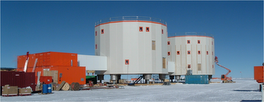Successful Concordia summer campaign
It has been over three months since I last posted here!! Field work simply got too exhausting for blogging, and since getting back from the field at the end of February, I've been running around trying to catch up with all the work that had been left behind.
Here is a short article (in French) we wrote for the IPEV website describing the deployment of the CASE-IPY Concordia-Vostok profile: Quatre nouvelles stations sismologiques au coeur de l'Antarctique
You can also download the Seismology at Concordia paper we wrote last year for the IPEV annual report. The paper is in French, but it does have an English abstract:
Our understanding of earthquakes and the structure of the Earth derives from the analysis of ground motion recordings from a large number of networked seismic stations. Mutual sharing of these records allows us to characterize earthquakes in detail, and also construct images of the interior of the Earth, called "tomographic images". In order to obtain high quality images, seismic station coverage should be dense and homogeneous. In the Southern hemisphere, the prevalence of oceans and the difficult access to land-masses lead to a deficit in coverage. In the 1990s, there were only ten seismic stations in Antarctica, of which only one, South Pole, in the interior of the continent. The "Seismology at Concordia" program aims primarily to establish a second "observatory-quality" continental station. A second part of the project, present from the start and reinforced for the IPY, is the installation of autonomous stations for more local studies.



